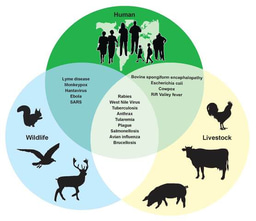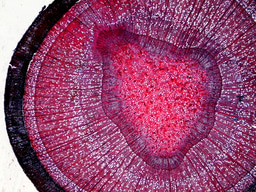“I can hear you”: How Illness Perceptions Shape the Identity of Children with Rare Diseases
Published in Paediatrics, Reproductive Medicine & Geriatrics

OVERVIEW:
Children typically associate “rare” with Pokémon. Yet 75% of the 3.5 million living with a rare disease in the UK, are children who may believe otherwise.1 A disease affecting fewer than 1 in 2,000 people is rare but does not necessarily mean unknown – cystic fibrosis and sickle cell disease are household names.2 Though this is markedly different for the other 7,000 lesser-known rare diseases.2 Newborn screening has a crucial role in diagnosis, and the ongoing Generation Study is screening newborns for over 200 of these conditions.3 Yet there is a research-to-practice gap as currently in the UK, neonates are only heel pricked for 9 rare genetic conditions.4
The archetypal early life for these children is filled with misdiagnoses, inconclusive test results and waning hope. This delay is known as the diagnostic odyssey,5 and directly harms health outcomes.6 Timely diagnoses facilitate early intervention such as gene therapy,7 and relieve biopsychosocial stress from families. Therefore, a rare disease diagnosis may be seen as the optimal goal. However, this is only the beginning. In this blog, I aim to explore the lasting implications of illness perceptions, after the elusive diagnosis is found.
CASE STUDY:
The diagnostic odyssey was not central to Erin’s experience. She was screened and diagnosed at birth with Type 3 Gaucher’s disease, as her older sister had previously been diagnosed with the same condition. Gaucher’s disease is a lysosomal storage disorder (LSD), where a lack of the enzyme glucocerebrosidase, results in a build-up of lipids throughout the body.8 Unlike Type 1, Type 2 and 3 feature neurological involvement too.9 However, Gaucher’s has wide phenotypic severity,10 and Erin’s Type 3 symptoms were consistently well-managed due to her enzyme replacement therapy (ERT).
Erin was used to the unique situation of meeting healthcare professionals who had never seen Gaucher’s before. Though even as a young child, she could sense the concern and collaboration from her multidisciplinary Team Around the Child (TAC),11 that filled this knowledge gap. The continuity with her wonderful GP meant she never had to wait for her mother to explain what Gaucher’s was, her play therapist would provide endless colouring activities, and the paediatric nurses would find her favourite toys when she had to do uncomfortable tests. During MRIs they would also let her watch “Bend it like Beckham”, every time. Her TAC ensured she felt seen as more than her condition and this underpinned a secure relationship with her own identity beyond her Gaucher’s. Erin also recognised the medicalisation of her mother’s role in her care and was always grateful for her unwavering support and advocacy.12 Upon reflection, Erin described only positive experiences of care as a child.
Conversely, in secondary school she resented her personal teaching assistant and rejected the large font and extra time for assessments too. To her, these learning disability provisions felt extensive and blanketly applied, rather than being tailored to her true needs. Erin made her closest friends in secondary school, though they were separated when she was made to repeat the year, after missing a month of school with swine flu. This was a difficult time in Erin’s life, but ultimately it was the transition from paediatric to adult care that was the most challenging. She had to leave the warmth and colour of the children’s hospital and the same people who had supported her for so long. Even if she did not play with toys anymore, the corners of clinics felt too sharp without them. Within months of moving to the new hospital, her father also passed away. Grieving this loss and moving to adult care was a stark adjustment. But over time, she built her own doctor-patient relationships and discovered a newfound autonomy. Perhaps she could now be seen as more than a “sick child”.
GAUCHER’S AND IDENTITY:
“Identity” is the multifaceted interplay between how individuals inwardly perceive themselves and their place in the external world around them.13 Children are often more sensitised to the characteristics attributed to them and their environment, than we may first assume. From a young age, Erin remembers asking why she had to go to the children’s hospital if she was not "sick". Aside from her slight eye movements, Erin’s Type 3 Gaucher’s was invisible. She felt this encouraged further trepidation as every slight mention of pain or fatigue was hyper-analysed by the adults around her. However well-meaning, it was frustrating to relentlessly be warned to "be careful" or rushed to the hospital with the slightest cold. She often felt isolated, misunderstood, and exasperated to only be seen through the lens of her condition. Retrospectively, the “Family Fun Days” with Gaucher’s Association were clear reminders of how she could be seen simply as herself. Patient advocacy groups (PAG) have frequently been shown to foster this invaluable sense of community.14
CONCLUSION:
Children with rare diseases are a vastly heterogenous population, yet they are united by the limiting illness perceptions that follow them throughout the formative stages of their life. Widespread education gaps amongst healthcare professionals, remain a barrier to effective understanding of their needs and lived experiences, preventing optimal delivery of care.15 In addition, the paucity of rare disease literature to guide practice, is heightened regarding paediatric populations due to challenges in recruitment, ethical objections, and adult-centric reporting bias.16 Though for many children, no study will create overnight change in their day-to-day, as impactfully as their interactions with their healthcare teams and the way they are spoken to by those around them. Erin’s positive experiences of paediatric care were a result of long-standing, intentional efforts that had her best interests as a child at their core, not just as a patient. Listening and learning from rare disease populations will be fundamental in improving future outcomes and rejecting inaccurate illness perceptions inside and outside of the hospital. Ultimately, Erin’s story serves as a reminder of the privilege of our role as healthcare professionals, in safeguarding the mental-wellbeing, health attitudes and strong sense of identity in children navigating their rare disease diagnosis.
REFERENCES:
- Rare Disease Research Landscape Steering Group, Bainbridge K. Rare Diseases Research Landscape Project Report [Internet]. 2023 Sep. Available from: https://openresearch.nihr.ac.uk/documents/3-45
- Haendel M, Vasilevsky N, Unni D, Bologa C, Harris N, Rehm H, et al. How many rare diseases are there? Nat Rev Drug Discov. 2020 Feb;19(2):77–8. doi: 10.1038/d41573-019-00180-y
- Stone, K. The Generation Study — Knowledge Hub. GeNotes. [Internet]. 2024. Available from: https://www.genomicseducation.hee.nhs.uk/genotes/knowledge-hub/the-generation-study/.
- Chudleigh J, Chinnery H, Holder P, Carling RS, Southern K, Olander E, et al. Processing of positive newborn screening results: a qualitative exploration of current practice in England. BMJ Open. 2020 Dec;10(12):e044755. doi:10.1136/ bmjopen-2020-044755
- Bauskis A, Strange C, Molster C, Fisher C. The diagnostic odyssey: insights from parents of children living with an undiagnosed condition. Orphanet J Rare Dis. 2022 Dec;17(1):233. doi: 10.1186/s13023-022-02358-x
- Pavisich K, Jones H, Baynam G. The diagnostic odyssey for children living with a rare disease – Caregiver and patient perspectives: A narrative review with recommendations. Rare. 2024;2:100022. doi: 10.1016/j.rare.2024.100022
- Mahase E. Toddler becomes first child to receive gene therapy for fatal disorder on the NHS. BMJ. 2023 Feb 15;p370. doi: 10.1136/bmj.p370.
- Sheth J, Nair A, Jee B. Lysosomal storage disorders: from biology to the clinic with reference to India. The Lancet Regional Health - Southeast Asia. 2023 Feb;9:100108. doi: 10.1016/j.lansea.2022.100108
- Stone WL, Basit H, Mukkamalla SKR, Master SR. Gaucher Disease. In: StatPearls [Internet]. Treasure Island (FL): StatPearls Publishing; 2024. Available from: http://www.ncbi.nlm.nih.gov/books/NBK448080/
- Hughes DA, Pastores GM. Gaucher Disease. In: Adam MP, Feldman J, Mirzaa GM, Pagon RA, Wallace SE, Amemiya A, editors. GeneReviews® [Internet]. Seattle (WA): University of Washington, Seattle; 1993. Available from: http://www.ncbi.nlm.nih.gov/books/NBK1269/
-
Constantinou G, Cook EJ, Tolliday E, Randhawa G. ‘A team around the child’ professionals’ experiences of unmet needs, access and expectations in children’s palliative care services, a phenomenological study in the UK. J Child Health Care.
2024 Dec;28(4):729-746. doi: 10.1177/13674935221147716
- Baker K, Claridge AM. ‘I have a Ph.D. in my daughter’: Mother and Child Experiences of Living with Childhood Chronic Illness. J Child Fam Stud. 2022 Dec 12;1–12. doi: 10.1007/s10826-022-02506-8
- Buckle N, Rogers Y, O’Toole D, McNulty S, Kroll T, Gibbs L, et al. A qualitative exploration of children’s lives with rare diseases. Child. 2024 Jul;50(4):e13294. doi: 10.1111/cch.13294
- Delisle VC, Gumuchian ST, Rice DB, Levis AW, Kloda LA, Körner A, et al. Perceived Benefits and Factors that Influence the Ability to Establish and Maintain Patient Support Groups in Rare Diseases: A Scoping Review. Patient. 2017 Jun;10(3):283–93. doi: 10.1007/s40271-016-0213-9
- Rohani-Montez SC, Bomberger J, Zhang C, Cohen J, McKay L, Evans WRH. Educational needs in diagnosing rare diseases: A multinational, multispecialty clinician survey. Genetics in Medicine Open. 2023;1(1):100808. doi: 10.1016/j.gimo.2023.100808
- Casas F, González M, Navarro D, Aligué M. Children as Advisers of Their Researchers: Assuming a Different Status for Children. Child Ind Res. 2013 Jun;6(2):193–212. doi: 10.1007/s12187-012-9168-0





Please sign in or register for FREE
If you are a registered user on Research Communities by Springer Nature, please sign in